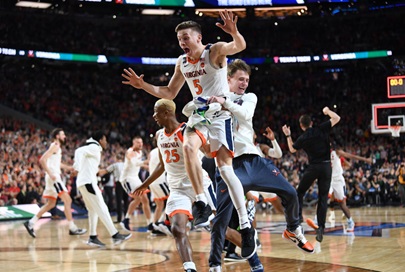Source: www.sportsbusinessdaily.com, March 2020
The NCAA announced that it will “reduce its direct distribution” to D-I conferences and schools this year by about $375M to $225M, according to Steve Berkowitz of USA TODAY. The move “resulted from cancellation” of the NCAA Tournament due to the coronavirus pandemic, an event that “generates nearly all” the association’s roughly $1.1B in normal annual revenue. The NCAA had been scheduled to distribute just under $600M “directly to conferences and schools from April 15 through June 10.” The reduction’s impact on schools “may vary by conference.” Some of the NCAA money “goes directly to schools,” but “most goes to conferences, which, in turn, have revenue-sharing arrangements.” Big 12 Commissioner Bob Bowlsby during a conference call after the NCAA’s announcement on Thursday said the conference maintains an operating reserve and “we have some money beyond that that was a result of money that we withheld last year for another purpose.” Berkowitz notes as such, Big 12 schools “may feel no impact unless the football season is affected by the pandemic.” The NCAA said that of the $225M total distribution, $50M will “come from NCAA reserves.” Berkowitz reports the association also has a $270M event-cancellation insurance policy “connected to the tournament, and the proceeds, when received, will be used to pay off a line of credit that the association will tap as needed” (USA TODAY, 3/27).
CLOSURE & CLARITY: The AP’s Ralph Russo wrote schools that “compete in the wealthiest conferences, with billion-dollar television contracts fueled by major college football, might not notice much of a difference in the short term.” But schools competing in mid-major conferences are “preparing to make sacrifices.” Still, Mid-Eastern Athletic Conference Commissioner Dennis Thomas “praised the NCAA for keeping member schools informed about the potential severity of the cuts in advance of the announcement,” applauding the association for being “fair and balanced ‘across the board from Power Five to FCS institutions'” (AP, 3/26). Several ADs on Thursday said that they “welcomed some certainty about the severity of the cut.” Utah State AD John Hartwell said, “It’s a little bit of a gut punch, but we knew this one was coming. The good thing is we can quantify it and move on.” N.C. State AD Boo Corrigan said, “There’s a certain finality to it. The greater clarity you can have in moments like this the better” (N.Y. TIMES, 3/27).
IMPACT ZONE: THE ATHLETIC’s Nicole Auerbach wrote the cut will affect D-I athletic departments in “myriad ways, likely starting with staffing reductions or salary freezes and eventually causing schools to reduce scholarships and potentially cut sports entirely.” In addition, facility projects, “depending on how far along they are, will be put on the back burner.” Within hours of the news breaking on Thursday, schools had “already begun adapting to a new financial reality.” For example, Indiana’s athletic department announced that it “would defer any non-essential building and maintenance projects and purchases” (THEATHLETIC.com, 3/26).
NIL IN PLAY: SI.com’s Pat Forde wrote the “uncertainty could easily spill over to attempts to compensate student-athletes” as well. Legislation has been “passed or is pending in many states, with the NCAA moving earlier this year to seek Congressional intervention and uniform national regulation.” However, the NIL issue has “moved from front burner to back burner amid the current climate, but eventually it will return to prominence.” The “problem is that money theoretically available through local sources — school donors and businesses — could be drying up with the economic downturn,” which “could impact both the universities and athletes seeking name, image and likeness compensation” (SI.com, 3/26).

